
The following is a short piece that I composed upon leaving Chile after nearly two months of traveling and working in that country on efforts to protect wild rivers in Patagonia from massive hydroelectric development. In my compositions I seem to always run the risk of serious hyperbole, a tendency that my colleagues thankfully point out to me right when I need to hear it most. Nevertheless, I share this piece here as another short item that attempts to paint a picture of the old-school ignorance that drives the push to destroy the largest rivers in Patagonia for short term profit and monopoly dominance of a society and its landscape. Chile is at risk of committing an irreversible error that will benefit only a very select sector of society, an error built upon dinosaurs and dynamite. It does however seem that our efforts to celebrate free flowing wild rivers, as hyperbolic as they might be, are having a positive impact. Regardless of the lawless and brute force with which the proponents of hydroAysén push forward with the project, the reality is that the company is already postponing the submission of their project to Chile’s system of evaluation of environmental impact and that Chilean society is steadily awakening to the audacity and barbarity of the proposal. In that light I have to say that my visit to Patagonia was effective and that our campaign is bearing fruit—stay tuned here for more updates as the issue evolves over the next months. In the meantime, enjoy the hyperbole and wordplay that I have published below.
Existen lugares que nos hacen pensar en el largo del tiempo. No es el largo del tiempo de nuestras vidas, ni de nuestras sociedades, pero el largo del tiempo de los milenios, de las geologías, de los movimientos de las tierras, y de las adaptaciones de las evoluciones. De vez en cuando nos encontramos en lugares del largo del tiempo en los cuales podemos hasta imaginar que pasarán dinosaurios frente de nuestros ojos. Otras veces son lugares donde no nos perdimos en juegos o fantasías de las maquinas de tiempo, pero sí donde nos distraemos del presente en sentir la fuerza del pasado y hasta revivir las épocas de los dinosaurios. Son lugares que nos regalan una sensación de un pasado lejano, de un antecedente que tiene que ver con nuestra realidad pero que ahora no es nuestra realidad presente mucho menos de nuestro futuro. Sin embargo, sabemos que la trayectoria del tiempo que sentimos en éstos lugares tiene importancia, es relevante y nos ofrece perspectiva sobre nuestras vidas y la expresión de nuestra humanidad dentro del contexto de los cambios elementales y el tiempo.
Por mí, llegar al Río Pascua fue llegar a un lugar que me hacía sentir el correr de los tiempos, desde un pasado casi imposible imaginar, hasta un pasado tan reciente que ni importó cuanto intentaba olvidármelo, siempre me estaba presente. Metafóricamente, el corriente en común fueron los dinosaurios, los dinosaurios reales de los comienzos del tiempo y de los dinosaurios fantásticos perdido en el pasado. En el Río Pascua pensé en los dinosaurios en términos de los continentes originales, en términos de seres que ya no pertenecen a nuestra realidad, y en ciertos individuos cuyos formar de pensar es de antigüedades y encuadradas maneras de contemplar el presente. Pensé en los dinosaurios que existieron como parte de la evolución, que aunque se extinguieron también fueron parte del milagro de la creación. Y pensé en los dinosaurios de hoy en día, que son seres perdidos en un pasado y que por algo inflexible en su composición se nos llevan rápidamente hasta una nueva época de extinción.
La cuenca del Río Pascua es una de las cuencas hídricas menos conocida en todo las Américas, y es probablemente el río menos conocido y más silvestre de Chile. Nacido del gran Lago O’Higgins (conocido como San Martín en Argentina), el Río Pascua es de relevancia continental y global, y es esencialmente el gran corriente de agua que baja desde el borde norteño del Campo de Hielo Patagónico Sur hasta el Canal Baker y luego al mar abierto. Véalo en su escala física real y lo verás en su escala de tiempo también. Es majestuosa, es expansiva, es poderosa, el Río Pascua es uno de los pocos ejemplos que nos quedan intactos en Chile y en el planeta para completamente entender la escala de vida en nuestro planeta y del milagro que es la creación y el correr de los tiempos.
El Río Pascua es nuevo y antiguo, todo a la misma vez. La cordillera va creciendo del mar y ha cambiado mucho en los últimos milenios, pero también el antiguo continente del Gondwana está presente. Quizá hace poco que el hielo dejó de cubrir esta roca dura que es el fundamento de la topografía difícil de la cuenca, pero hace mucho que la evolución ha tenido su dominio sobre esta tierra. La cuenca del Río Pascua es prístina, tiene intacta las relaciones ecológicas del ecosistema prehistórico y mantiene un alto valor biológico por la presencia del complejo de las especies nativas y la ausencia de impactos de las actividades humanas. No existe una manera de intervenir en el paisaje de la cuenca del Río Pascua en una manera industrial sin acabar con su característica silvestre y auténtica. Se habla de una utilidad de unos 50 años cuando se habla de las represas de hidroAysén, pero la cuenca del Río Pascua es una cuenca en la cual 50 años es una gotita de tiempo que casi no se medir por ser tan pequeño frente de su grandeza y trayectoria elemental. Que son 50 años frente del milenio que lleva el agua de correr desde el campo de hielo hasta el mar? La posibilidad de realizar una serie de mega proyectos hidroeléctricos en la cuenca del Río Pascua sin destruir su valor ambiental es un mito fantástico nacido en los escritorios de los profesionistas de las empresas de relaciones públicas, gente que tiene ningún vocabulario ecológico, dando luz a una fantasía igual a las películas de dinosaurios como el Jurassic Park. Hablar de mitigar impactos al represar el Río Pascua es confundir la explosión de dinamita con el trueno del ventisquero—y viene de una mente que sufre de un analfabetismo ambiental.
La realidad de la propuesta de hidroAysén es una realidad explosiva. Si hay una cosa que se tendría que utilizar para represar el Río Pascua es la dinamita. Mucha dinamita. Toneladas y toneladas de dinamita. No es posible mitigar la destrucción necesaria para construir caminos, túneles, y represas en una cuenca prístina. La dinamita no es un proceso natural como el ir y venir de un glaciar. Es una destrucción total, la conversión de un lugar que trasciende el correr del tiempo hasta ser una zona de sacrificio industrial. En términos ambientales no hay como mitigar los impactos de la propuesta. El concepto de mitigar los impactos ambientales de intervenir en el Río Pascua es una mentira y una propaganda de pura fantasía.
Son dinosaurios fantásticos ellos que proponen la destrucción del Río Pascua. Son dinosaurios los Mateo, los Perez Yoma, los Pizarro (que increíble pensar que los criollos Chilenos ya quieren regalar su independencia a los españoles conquistadores, no?), los Angelini, y los Matte que proponen a Chile y al mundo que la solución a los desafíos energéticos y económicos de Chile queda en la intervención masiva en los Ríos Baker y Pascua. Son mentes fundamentalistas que solo piensan en sus cuentas bancarias del corto plazo, y que necesitan de las grandes firmas de relaciones públicas para disfrazar su propuesta destructiva y analfabeta ecológica de utilidad pública y factibilidad ambiental, por que sin inversiones gigantescas en publicidad sus ideas no podrían ni ser considerados razonables debido a la ausencia completa de justificación social y ambiental.
El tema de la propuesta de hidroAysén es un tema de dinosaurios y dinamita. Los dinosaurios pueden ser reales y pueden ser fantásticos, pero la dinamita que quieren usar para destruir los ríos patagónicos es de verdad, y es muy explosiva. Solo los que tienen una mente vacía y obsesionada por su poder y su dinero pueden seguir ciegos a la destrucción y irresponsabilidad que sería intervenir en los paisajes únicos de la Patagonia y meter un cuchillo en la cultura libre de la región de Aisén. Chile queda al borde de cometer un error que es irreversible y que va a revelar al mundo la poca sofisticación que tiene la alta sociedad chilena en permitir esto tipo de barbaridad en el siglo 21. Dinosaurios y dinamita son los dos ingredientes primarias de la propuesta de hidroAysén—nos queda ver si Chile los traga entera o si se despierta en buena hora para defenderse de una propuesta explosiva y destructiva.



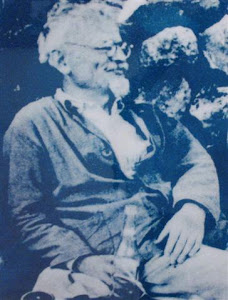.jpg)



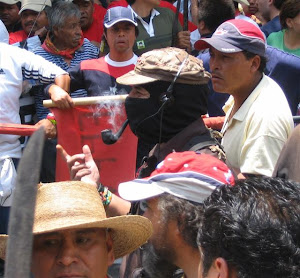.jpg)











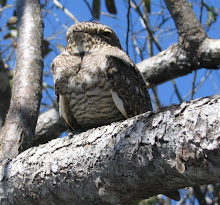.jpg)
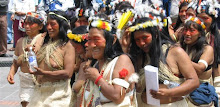.jpg)
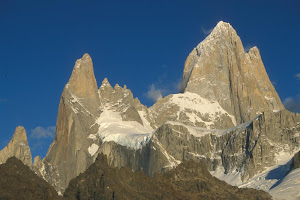.jpg)


